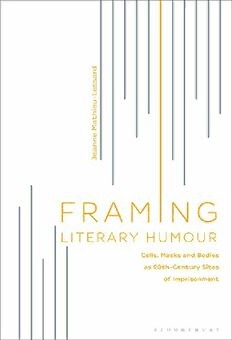
Framing Literary Humour: Cells, Masks and Bodies as 20th-Century Sites of Imprisonment PDF
209 Pages·2020·1.334 MB·English
Most books are stored in the elastic cloud where traffic is expensive. For this reason, we have a limit on daily download.
Preview Framing Literary Humour: Cells, Masks and Bodies as 20th-Century Sites of Imprisonment
Description:
Contrary to what their oppressive design could lead us to believe, might structures of imprisonment actually incite humour, itself a form of liberation? Starting from the most obvious areas of imprisonment (war camps, prison cells) and moving to the less obvious (masks, bodies), Framing Literary Humour demonstrates how 20th-century humour in theory and in fiction cannot be fully understood without a careful look at its connection with the notion of imprisonment.Understanding imprisonment as a concrete spatial setting or a metaphorical image, Jeanne Mathieu-Lessard analyses selected works of Romain Gary, Giovannino Guareschi, Wyndham Lewis, Vladimir Nabokov and Luigi Pirandello to reconfigure confinement as an essential structural condition for the emergence of humour.
See more
The list of books you might like
Most books are stored in the elastic cloud where traffic is expensive. For this reason, we have a limit on daily download.
